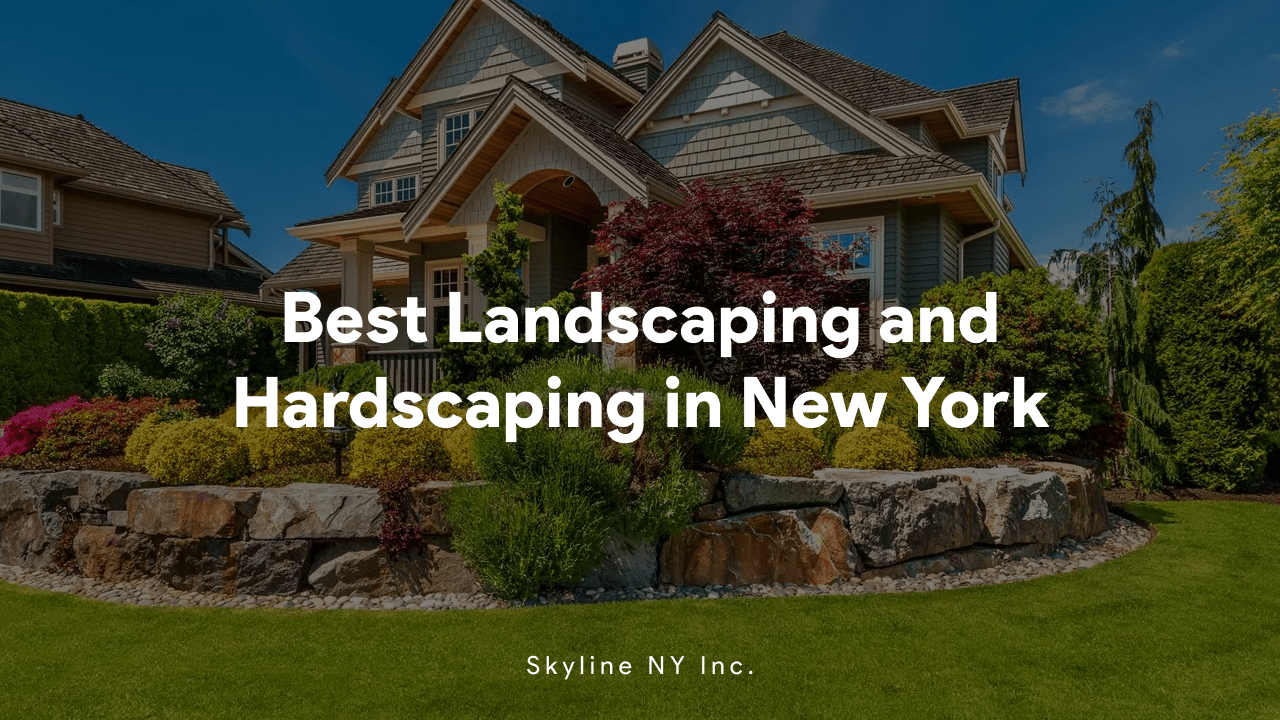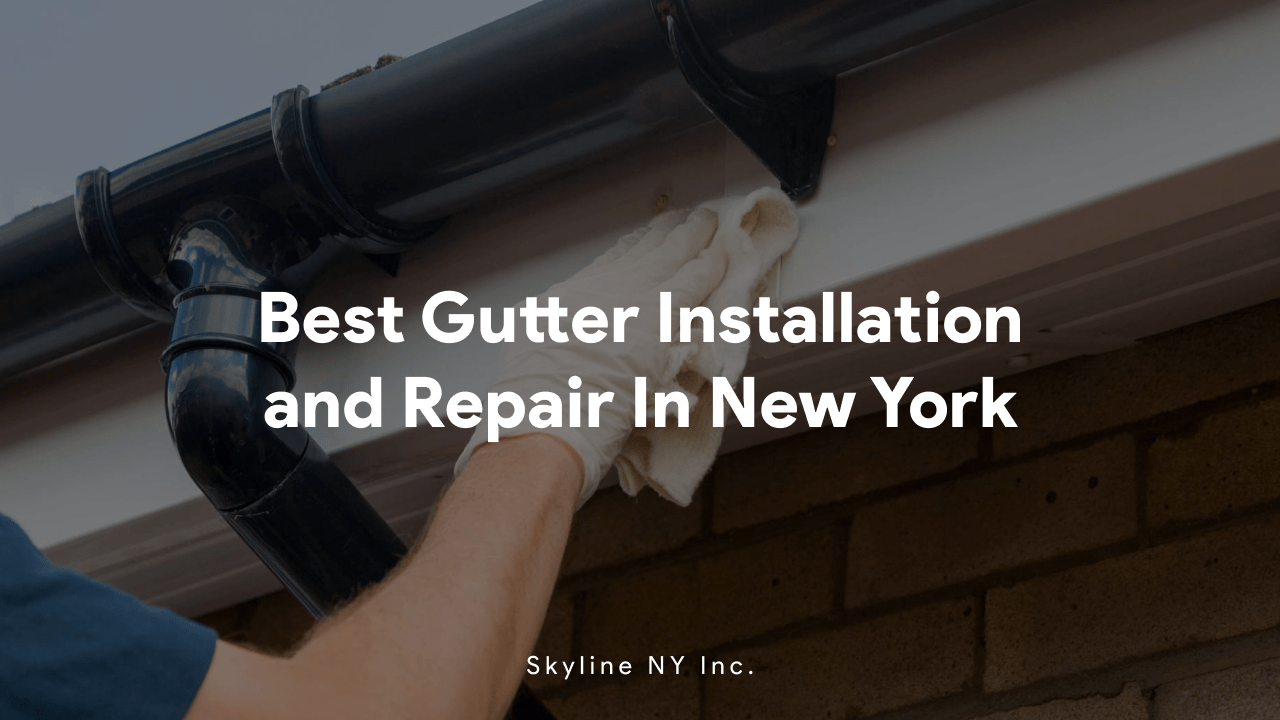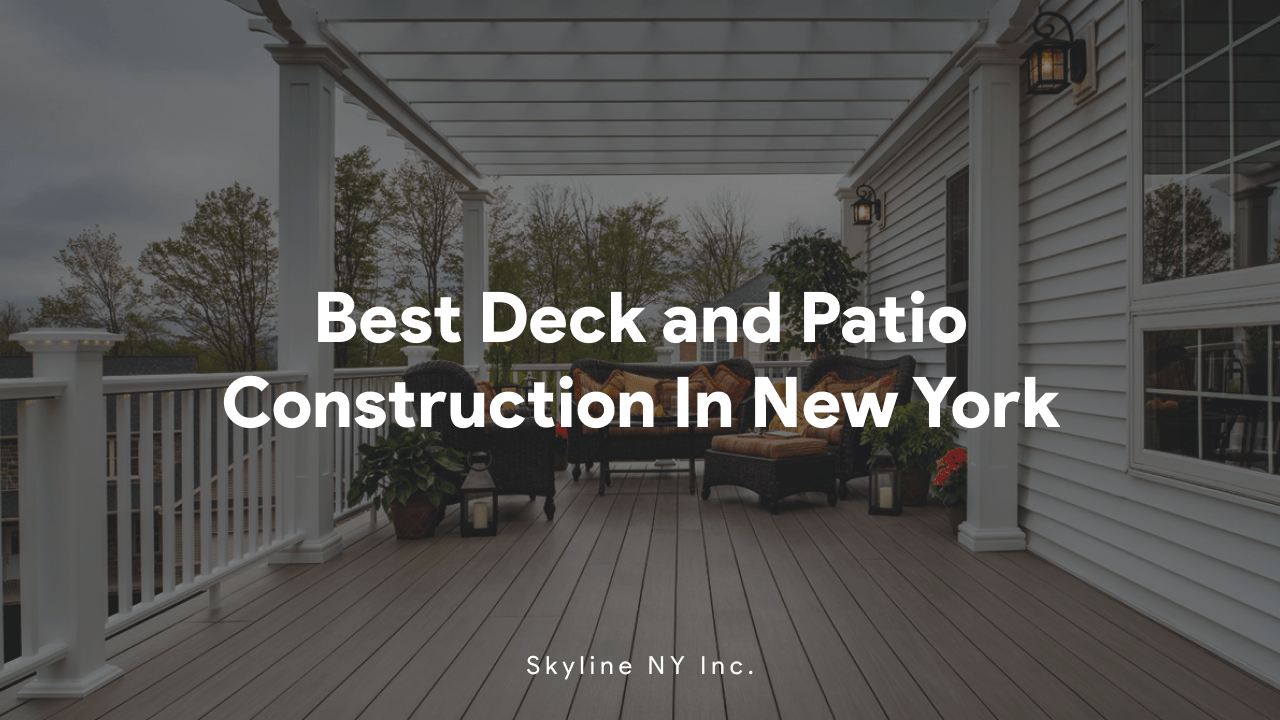
Best Landscaping and Hardscaping in New York

Best Landscaping and Hardscaping in New York Skyline
When it comes to enhancing your outdoor space, landscaping and hardscaping play pivotal roles. These two distinct approaches work in harmony to create a beautiful, functional, and inviting environment around your home. Let’s delve into the world of landscaping and hardscaping, demystifying their differences and exploring how they can elevate your New York property.
What Is Landscaping?
Landscaping involves designing and installing natural elements that breathe life into your yard. Think of lush green lawns, vibrant flower beds, and towering trees. Here are some key aspects of landscaping:
- Plants and Trees: Landscaping revolves around selecting and arranging plants, flowers, shrubs, and trees. These living elements add color, texture, and character to your outdoor space.
- Lawn Care: Maintaining a healthy lawn is essential. Regular mowing, fertilizing, and weed control contribute to a lush, inviting lawn.
- Softscaping: This term encompasses all the organic components of your landscape, from soil to mulch to garden beds.
What Is Hardscaping?
Hardscaping, on the other hand, focuses on the installation of hard, non-living elements. These materials don’t naturally grow in your yard but serve essential purposes. Here’s what you need to know about hardscaping:
- Materials: Hardscaping materials include brick, concrete, wood, pavers, and stone. These robust materials withstand weather extremes and provide longevity.
- Functionality: Hardscaping elements enhance both aesthetics and functionality. They create usable spaces, improve drainage, and define boundaries.
- Design Features: Let’s explore some common hardscaping features:
- Patios: Patios extend your living area outdoors. Consider brick, concrete, or flagstone for your patio surface. Sliding patio doors seamlessly connect indoor and outdoor spaces.
- Decks: Decks offer versatility for relaxation, entertainment, and gatherings. Customize your deck with built-in seating, lighting, and planters.
- Fences: Fences define property lines, add visual interest, and enhance curb appeal. Bamboo, wood, and wrought-iron fences are popular choices.
- Retaining Walls: These walls prevent erosion, manage slopes, and create terraced levels. Construct them using concrete blocks, natural stone, or bricks.
Why Combine Landscaping and Hardscaping?
Balance: The synergy between softscaping (plants) and hardscaping (materials) achieves a harmonious balance. A well-designed landscape incorporates both seamlessly.
Property Value: Thoughtfully executed landscaping and hardscaping can significantly increase your property’s value. Potential buyers appreciate a thoughtfully designed outdoor space.
Year-Round Appeal: While plants bloom seasonally, hardscaping elements remain constant. This ensures year-round visual appeal.
Tips for maintaining my landscaped garden?
Maintaining a beautifully landscaped garden requires consistent care and attention. Here are some practical tips to keep your outdoor oasis thriving:
Regular Watering:
Frequency: Water your plants regularly, especially during dry spells. Aim for deep watering rather than frequent shallow watering.
Morning Watering: Water in the morning to allow plants to absorb moisture before the heat of the day.
Weeding:
Stay Vigilant: Regularly inspect your garden for weeds. Remove them promptly to prevent competition with your desired plants.
Mulch: Apply a layer of organic mulch around plants to suppress weed growth.
Pruning and Trimming:
Deadheading: Remove faded flowers (deadheading) to encourage new blooms.
Trim Overgrowth: Prune shrubs and trees to maintain their shape and promote healthy growth.
Fertilizing:
Balanced Fertilizer: Use a balanced, slow-release fertilizer to provide essential nutrients to your plants.
Seasonal Application: Fertilize in spring and early fall for optimal results.
Pest Control:
Monitor: Keep an eye out for pests like aphids, snails, and caterpillars. Address infestations promptly.
Natural Solutions: Consider natural pest control methods, such as introducing beneficial insects or using neem oil.
Soil Health:
Testing: Periodically test your soil to assess its pH and nutrient levels.
Amendments: Add organic matter (compost, leaf mulch) to improve soil structure and fertility.
Seasonal Adjustments:
Winter Prep: Protect sensitive plants from frost by covering them or bringing them indoors.
Summer Shade: Provide shade for delicate plants during scorching summer days.
Hardscaping Maintenance:
Inspect Paths and Retaining Walls: Check for cracks, unevenness, or loose stones. Repair as needed.
Clean Patios and Decks: Remove debris, moss, and stains from hardscape surfaces.
Lawn Care:
Mowing: Regularly mow your lawn to maintain an even height.
Aeration: Aerating the soil helps nutrients reach grass roots.
Seasonal Planting:
Spring and Fall: These are ideal seasons for planting new additions to your garden.
Remember, a well-maintained garden not only adds beauty but also contributes to your overall well-being. Enjoy the serenity of your landscaped haven.






